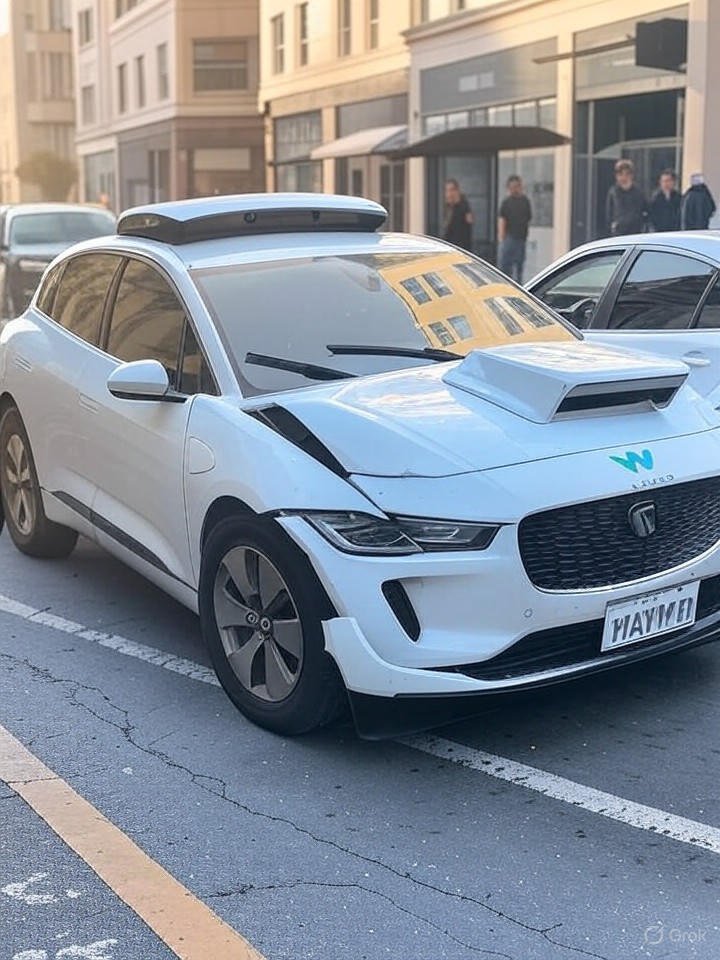The Recent Waymo Collision and Media Silence
In the bustling streets of San Francisco, a peculiar incident recently unfolded, when one Waymo autonomous vehicle rear-ended another, as captured in footage circulating on social media. This collision, while minor and resulting in no injuries, highlights ongoing challenges in the autonomous vehicle sector. Yet, remarkably, major news outlets have largely ignored the event, prompting questions about selective reporting in an industry where public perception can make or break technological adoption.
According to posts on X, formerly known as Twitter, from influential Tesla watcher Sawyer Merritt, this lack of coverage stands in stark contrast to how similar mishaps involving Tesla’s vehicles are treated. Merritt noted that if two Tesla Robotaxis had collided, the story would dominate headlines, driven by the allure of negative narratives around Elon Musk’s company. This observation echoes broader sentiments in online discussions, where users argue that media bias favors sensationalism over balanced reporting.
Unpacking the Bias in Autonomous Vehicle Reporting
Delving deeper, data from the National Highway Traffic Safety Administration (NHTSA) reveals patterns in autonomous vehicle incidents. A report from DAM Firm, analyzing four years of NHTSA crash statistics updated in 2025, shows Waymo vehicles involved in various accidents, including collisions and minor contacts. Despite Waymo’s expansion across U.S. cities, these events often receive minimal mainstream attention, unlike Tesla’s Autopilot-related crashes, which frequently spark widespread scrutiny and regulatory probes.
Comparatively, Tesla’s Robotaxi program, still in its early invite-only phase, has faced intense media spotlight for any perceived flaws. A June 2025 article in Yahoo Finance highlighted regulatory eyes on Tesla incidents, even as Waymo announced service expansions in Atlanta. This disparity suggests that media outlets may prioritize stories that align with public fascination—or controversy—surrounding Tesla, potentially overlooking equivalent issues at competitors like Waymo.
Safety Data and Industry Comparisons
Waymo itself promotes a strong safety record, claiming in its own safety impact report that its driverless vehicles reduce crashes significantly compared to human drivers. A May 2025 piece in Mashable echoed this, noting AI drivers outperform humans based on insurance data. However, critics point to real-world hiccups, such as the 2023 Verge report detailing two crashes and 18 minor contacts over a million miles of Waymo testing, as per The Verge.
In contrast, Tesla’s approach has drawn fire for its beta testing of Full Self-Driving software, with NHTSA investigations into incidents. Yet, as Merritt highlighted in various X posts, media headlines often emphasize the “Tesla” brand in crash reports, while generic “car” descriptors suffice for others. This pattern, observed in posts dating back to 2023, underscores a perceived double standard that could influence investor confidence and regulatory decisions.
Public Sentiment and Broader Implications
Online reactions to the Waymo crash amplify these concerns. Commenters on Merritt’s post, such as those identifying as Tesla supporters, decry the media’s apparent vendetta against the company, suggesting it stems from Elon Musk’s outspoken nature. One user remarked that Tesla has faced opposition since inception, yet its innovations promise a safer world—a view shared in communities praising Tesla’s resilience against “mainstream media” narratives.
This sentiment aligns with recent analyses, like a June 2025 Electrek critique of a Bloomberg report that inaccurately favored Tesla in self-driving tech, only to be debunked for overlooking Waymo’s operational lead. Meanwhile, a fresh Auto123 article from just days ago claims Waymo’s robotaxis are 88% safer than human-driven trips, based on company data.
Regulatory Scrutiny and Future Challenges
Regulators are not blind to these dynamics. NHTSA’s 2024 probe into Waymo after traffic law violation reports, as mentioned in Merritt’s X updates, mirrors investigations into Tesla. A July 2025 CleanTechnica piece frames the competition among Waymo, Tesla, and newcomers like Zoox, noting Tesla’s brand reputation hurdles amid robotaxi stumbles.
As autonomous vehicles scale, this coverage imbalance could skew public trust. Industry insiders argue for more equitable reporting to foster genuine progress. While Waymo’s incidents like the recent crash may not signal doom, they remind us that no system is infallible, and media’s role in shaping narratives remains pivotal.
Toward a Balanced Narrative in AV Development
Looking ahead, experts call for transparency across all players. Tesla’s in-house AI advancements, contrasted with legacy automakers’ struggles, position it uniquely, per reports on X and beyond. Yet, as one commenter put it, Tesla continually proves detractors wrong, pushing toward a driverless future despite the noise.
Ultimately, the Waymo collision serves as a case study in media selectivity. By examining data from sources like NHTSA and company reports, it’s clear that safety improvements are underway, but fair coverage is essential to inform stakeholders accurately. As the sector evolves, addressing this bias could lead to more constructive dialogues on autonomous mobility’s promise and pitfalls.

